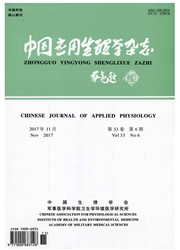

 中文摘要:
中文摘要:
目的:测量和比较感觉运动皮层Ⅱ/Ⅲ层锥体神经元和中间神经元的内在特性并研究其与动作电位编码频率和精确性的关系。方法:采用全细胞电流钳记录模式,获得的数据输入pClamp和Origin进行处理分析。结果:与锥体神经元相比,中间神经元群集动作电位具有较低的阈电位水平和较短的不应期,从而中间神经元具有较高的动作电位编码频率和精确性。结论:皮层神经元动作电位的阈电位水平和不应期调控动作电位的编码频率和精确性。
 英文摘要:
英文摘要:
Aim: To investigate the intrinsic mechanisms underlying spike prcgramming at pyramidal neurons and intemeurons in layer Ⅱ/Ⅲ of sensorimotor cortex. Methods: Electrical signals at the cortical neurons were recorded in current clamp model with multiclamp700B Amplifiers. Signals were inputted into pClamp and Origin for data acquisition and analyses. Results: Compared to pyramidal neurons, intemeurons express the higher capacity of spikes and the more stability of spike programming, which are mechanistically caused by lower threshold potentials and shorter refractory periods. Conclusion: The refractory periods and threshold potentials directly influence the prcgramming of sequential spikes.
 同期刊论文项目
同期刊论文项目
 同项目期刊论文
同项目期刊论文
 期刊信息
期刊信息
